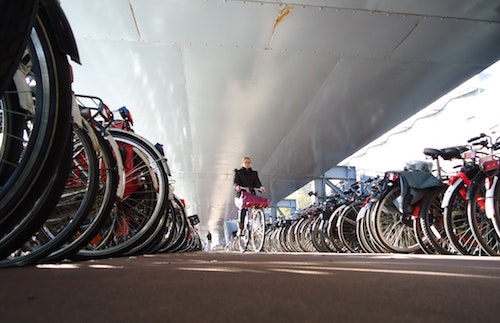The pandemic speeds up big cities’ decisions to limit traffic and expand space for cyclists and pedestrians

The lockdown caused by the COVID-19 pandemic seems to accelerate the changes already analyzed before by local authorities, such as transformation of city centers into more friendly areas for pedestrians and cyclists, according to Deloitte 2020 City Mobility Index.Cities that have reclaimed street space from cars to enable physical distancing for cycling and walking are looking to cement those changes in a post-coronavirus world, shows the study, which measures mobility performance in 21 cities around the world, including seven European cities - Amsterdam, Barcelona, Dublin, Lisbon, London, Manchester, Rome and Stockholm.
According to the study, private cars, once considered a symbol of the urban environment, are subject to an increasing number of restrictions, given that the downsides of a car-centric city are becoming more acute – congestion, poor air quality, road traffic accidents. Barcelona, which banned traffic in certain areas a few years ago, Stockholm, London and New York City, which imposed substantial fees for access to the city center with a personal car, and Berlin, which banned diesel vehicles from certain areas of the city, are just a few examples in this respect.
”Romanian largest cities are also facing an increasingly congested road traffic and therefore pollution.However, the infrastructure for active ways of travel, such as cycling lanes or pedestrian areas, is still poor. For example, in the Capital City, the authorities announced a project that includes building four cycling lanes routes, a total of 48 kilometers, which will link the existing bike track on Calea Victoriei to the most important four areas in Bucharest. But the implementation is slow and the tracks are difficult to use by cyclists in many cases,” said Ciprian Gavriliu, Tax Partner, Deloitte Romania.
Among the 21 cities participating in the study, six are considered successful in terms of environmental initiatives(including cycling infrastructure and measures to limit pollutant emissions) and five of them are European, namely Amsterdam, Barcelona, Dublin, Lisbon and Stockholm.Melbourne, Sydney and Riyadhare on the opposite side, with the least measures taken in this regard.
Another European city leads the ranking in terms of innovation in the mobility area, through measures such as access to 5G technology, use of digital payments, support for autonomous vehicles. Londonis the only city considered a global leader in this respect. Among the other European cities analyzed in the study, Amsterdam and Stockholmare considered successful in this field, while Romeis the lowest ranked in innovation.
On the other hand, the pandemic has extended the definition of safety to include hygiene, underlines the study. For many years in the past, safety in traffic has meant avoiding road accidents and preventing crime on public transport. As passenger numbers will pick up after the pandemic, a safe trip is also likely to mean one that is sanitary. For transport operators, that means employing a variety of measures, from temperature checks and new vehicle configurations, to more frequent services to reduce passenger loads. The risks of a return to normal without such measures are clear, given that the population remains reluctant to use public transport due to the risk ok contamination.
Deloitte City Mobility Index, conducted yearly since 2018,aims to measure the performance of urban mobility based on three indicators, namely performance, vision and accessibility. The full report is available here.






